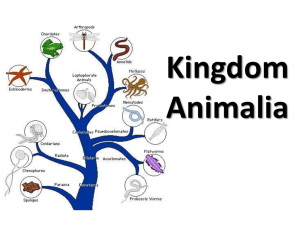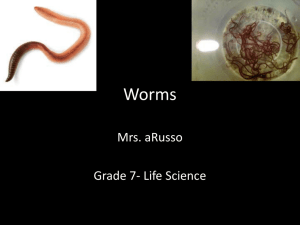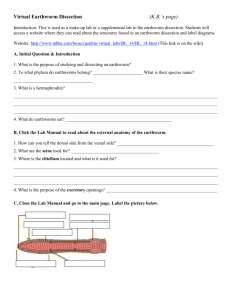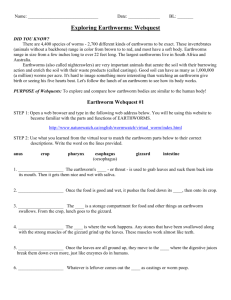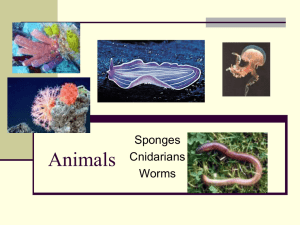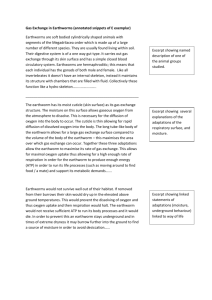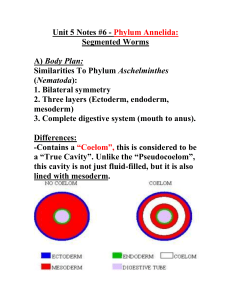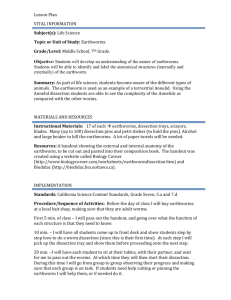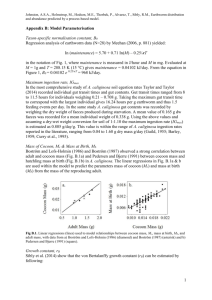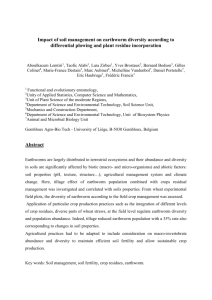The Earthworm
advertisement
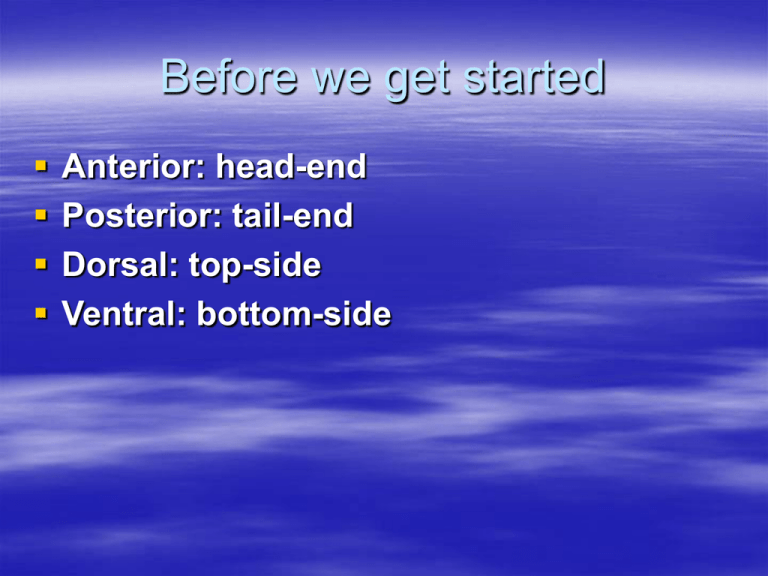
Before we get started Anterior: head-end Posterior: tail-end Dorsal: top-side Ventral: bottom-side Phylum Annelida many marine, freshwater, and terrestrial worms Ex) leeches and earthworms “segmented worms” – division of rings or segments septa/septum (walls) separate segments setae: small, bristle-like appendages Earthworm Giant Gippsland Earthworm of Australia External Anatomy Internal Anatomy Musculature *Cuticle- thin external layer. *Epidermis- outer cellular layer Circular muscle layer Longitudinal muscle layer Digestive System obtain food by eating through and taking nutrients from soil Mouth Pharynx Esophagus Crop: storage compartment. Gizzard: soil ground up and churned Intestine: digestion and absorption occur Anus: Undigested material is voided Earthworm Digestion Animation http://www.ncsu.edu/scivis/lessons/earthwor m/Overview.html Respiratory System All annelids live in moist environments – most are aquatic. earthworm can survive only in damp soil. – Gas exchange occurs at body surface through diffusion – No lungs! Circulatory System closed system five pairs of pseudohearts surround esophagus and pump blood blood travels to dorsal vessel Nervous System Cerebral ganglia acts as “brain” Prostomium: tongue-like lobe above mouth, allows earthworms to “feel” through soil Reproductive System Earthworms are hermaphrodites – male and female reproductive organs present in each individual – cross fertilize mate by attaching at clitella, exchanging sperm, then seperating – sperm stored while clitellum secrete a mucous cocoon – cocoon slides along worm to collecting sperm and also eggs – slips off worm's head – embryos develop in cocoon. What happens when an earthworm is cut in half? Can it form two separate worms? most organs are in anterior can regenerate a new posterior posterior end can not regenerate a new posterior so, no you don't get two new worms. Photographs, Images and text adapted from http://images.google.ca/imgres?imgurl=http:/ /kentsimmons.uwinnipeg.ca/16cm05/16labm an05/lb6pg2_files/earthworm2.bmp&imgrefu rl=http://kentsimmons.uwinnipeg.ca/16cm05 /16labman05/lb6pg2.htm&h=480&w=640&s z=901&hl=en&start=4&tbnid=Rvj5IZLbr72Dv M:&tbnh=103&tbnw=137&prev=/images%3 Fq%3Dearth%2Bworm%26gbv%3D2%26sv num%3D10%26hl%3Den%26sa%3DG
